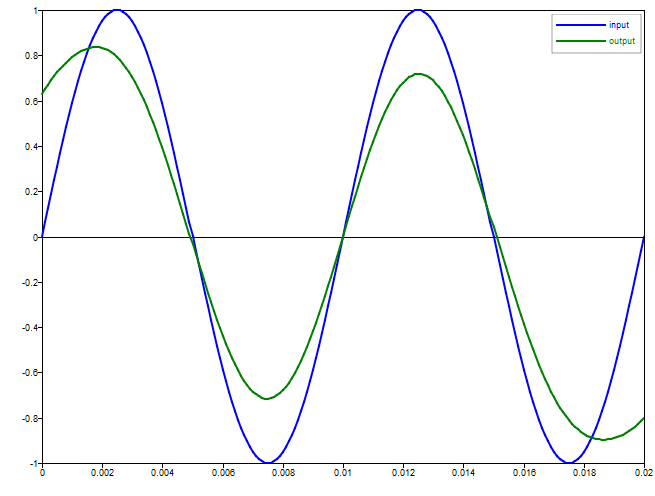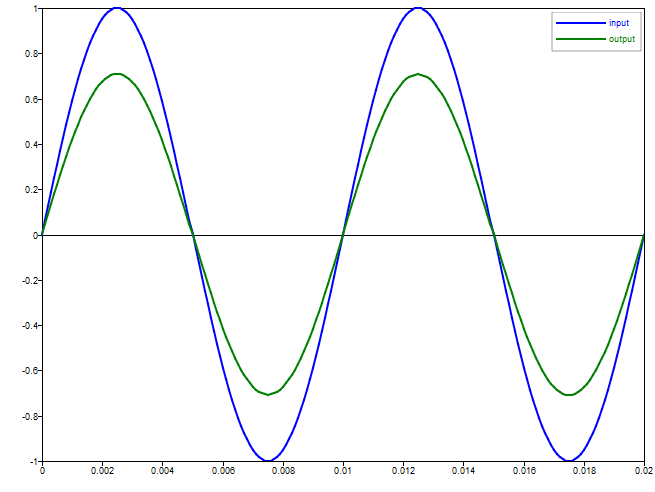saefilt95
Filters a signal with an SAE class filter.
Syntax
y=saefilt95(x,fs,cfc)
y=saefilt95(x,fs,cfc,pad,dir)
Inputs
- x
- The signal to be filtered. If x is a matrix, each column is filtered.
- fs
- The sampling frequency.
- class
- The channel frequency class of the filter (typically 60 or 180).
- pad
- The padding method.
- dir
- The direction in which to filter.
Outputs
- y
- The filtered signal.
Example
t = [0:0.0001:0.02];
input = sin(2*pi*100*t);
plot(t,input);
hold on;
output = saefilt95(input, 10000, 60, 0, 3);
plot(t,output);
legend('input','output');
Figure 1. filter figure 1
Example
t = [0:0.0001:0.02];
input = sin(2*pi*100*t);
plot(t,input);
hold on;
output = saefilt95(input, 10000, 60, 100, 3);
plot(t,output);
legend('input','output');
Figure 2. filter figure 1
Comments
saefilt95 is based on the SAE J211-1 (1995) standard. It uses a second order low pass Butterworth filter. The cfc is approximately 60% of the 3dB cutoff frequency when used bi-directionally.
fs should be at least 10 times cfc.